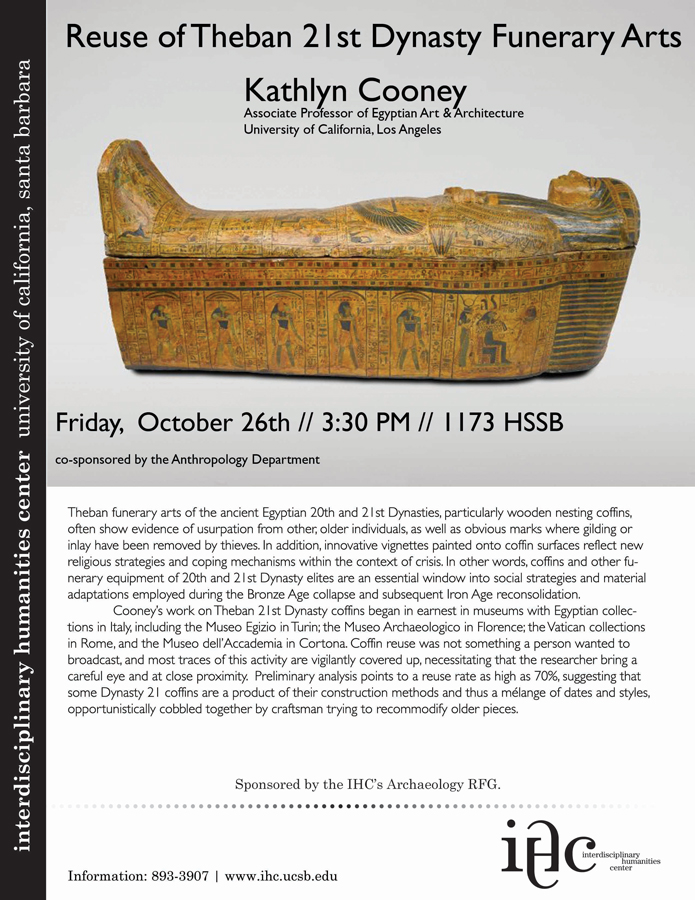26 Oct Reuse of Theban 21st Dynasty Funerary Arts: A Case Study of Coffins in Italian Collections

Kathyln Cooney (Art & Architecture, UCLA)
Friday, October 26 / 3:30 PM
1173 HSSB
Theban funerary arts of the ancient Egyptian 20th and 21st Dynasties, particularly wooden nesting coffins, often show evidence of usurpation from other, older individuals, as well as obvious marks where gilding or inlay have been removed by thieves. In addition, innovative vignettes painted onto coffin surfaces reflect new religious strategies and coping mechanisms within the context of crisis. In other words, coffins and other funerary equipment of 20th and 21st Dynasty elites are an essential window into social strategies and material adaptations employed during the Bronze Age collapse and subsequent Iron Age reconsolidation. Cooney’s work on Theban 21st Dynasty coffins began in earnest in museums with Egyptian collections in Italy, including the Museo Egizio in Turin; the Museo Archaeologico in Florence; the Vatican collections in Rome, and the Museo dell’Accademia in Cortona. Coffin reuse was not something a person wanted to broadcast, and most traces of this activity are vigilantly covered up, necessitating that the researcher bring a careful eye and at close proximity. Preliminary analysis points to a reuse rate as high as 70%, suggesting that some Dynasty 21 coffins are a product of their construction methods and thus a mélange of dates and styles, opportunistically cobbled together by craftsman trying to recommodify older pieces.
Sponsored by Archaeology RFG, co-sponsored by the Department of Anthropology
Website: https://www.ihc.ucsb.edu/research/archaeology.html

